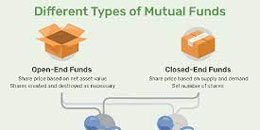
The bond market is often seen as a window into the future of the economy. Unlike stock markets, which can be volatile and influenced by speculation, the bond market tends to reflect more considered and long-term views on economic conditions. Investors in the bond market are typically regarded as "smart money," making decisions based on rigorous analysis of economic indicators. This article explores how bonds, particularly through the yield curve, provide insights into future economic health.
Understanding the Bond Market
The bond market deals with trading debt securities, usually issued by governments or corporations. When investors buy bonds, they are lending money to the issuer in return for regular interest payments and the repayment of the bond's face value when it matures. The interest rate, or yield, on these bonds indicates the borrowing cost and the perceived risk of the issuer.
The Mechanics of the Bond Market
Bonds are essentially loans made by investors to borrowers, usually governments or corporations. In return, the borrower agrees to pay back the principal amount on a specified date and periodic interest payments. The bond market encompasses all transactions and trading of these debt securities. The interest rate, or yield, on bonds, reflects the cost of borrowing and the risk perceived by investors.
The Yield Curve as an Economic Indicator
The yield curve is a crucial tool for predicting economic conditions. It represents the relationship between bond yields and their maturities, offering valuable insights into investor expectations about future interest rates, economic growth, and inflation.
Normal Yield Curve
A normal yield curve suggests a healthy, growing economy with expectations of rising interest rates. In this scenario, investors believe in the strength of future economic conditions, demanding higher yields for longer-term investments to compensate for the risks associated with time and inflation.
Inverted Yield Curve

An inverted yield curve signals investor pessimism about the economy's future performance. When short-term yields exceed long-term yields, it indicates that investors expect economic growth to slow down, potentially leading to a recession. This shape often prompts concerns about future economic stability and lower interest rates as investors seek safer, long-term investments.
Flat Yield Curve
A flat yield curve indicates uncertainty in the economic outlook, often seen during transitional phases between growth and recession. It suggests that the market is receiving mixed signals about the future, making it challenging for investors to predict economic trends confidently. A flat curve can also occur when short-term and long-term yields are very close, reflecting a cautious or neutral stance among investors.
Bond Market Predictions and Economic Health
The bond market's ability to forecast economic conditions stems from its sensitivity to changes in monetary policy, inflation, and economic growth. For instance, rising bond yields can indicate higher future interest rates set by central banks in response to inflationary pressures. Conversely, falling yields might reflect expectations of lower interest rates due to economic slowdown or recession.
Recent trends in the bond market have shown varied predictions. For example, in early 2024, despite expectations of slowing economic growth, bond markets reflected a cautiously optimistic outlook. This was influenced by factors like moderating inflation and resilient consumer spending, even as fiscal and monetary policies adjusted to new economic realities.
Accuracy and Limitations of Bond Market Forecasts
The bond market is often seen as a reliable predictor of economic conditions due to its sensitivity to economic factors and its long-term perspective. However, it is not without limitations. Understanding both the accuracy and constraints of bond market forecasts is crucial for investors and policymakers.
Accuracy of Bond Market Forecasts
Yield Curve as a Predictor: The yield curve is a central tool in bond market analysis. Historically, an inverted yield curve, where short-term interest rates are higher than long-term rates, has been a reliable indicator of impending recessions. For example, before most U.S. recessions in the post-war period, the yield curve inverted about 12 to 18 months ahead of the downturn.
Investor Behavior: Bond market forecasts are grounded in the expectations of sophisticated investors who closely monitor economic indicators, central bank policies, and global economic conditions. This collective insight often results in accurate predictions about economic trends.

Economic Sensitivity: Bond yields are highly sensitive to changes in monetary policy, inflation, and economic growth. Rising yields, for instance, can indicate expectations of higher future interest rates due to inflation, while falling yields may signal an anticipated economic slowdown or recession.
Limitations of Bond Market Forecasts
False Signals: Despite its strengths, the bond market is not infallible. There have been instances where yield curves have given false signals. For example, in the mid-1990s, the yield curve briefly inverted without a subsequent recession. Short-term market distortions or unique economic conditions can cause such anomalies.
Central Bank Policies: Central bank actions, such as quantitative easing or tightening, can alter bond market dynamics. For instance, large-scale asset purchases by central banks can artificially suppress yields, making it harder to gauge true market sentiment and economic forecasts.
Current Economic Environment: As of 2024, the bond market is navigating a complex landscape with moderating inflation and adjusting monetary policies. Bond yields have reflected cautious optimism about economic growth, but ongoing adjustments in central bank policies and potential geopolitical disruptions remain significant variables that could affect forecasts.
Conclusion
The bond market remains a critical forecaster of economic conditions, offering insights through yield curves and investor behavior. Understanding the bond market's signals can provide valuable foresight into future economic trends, but it is essential to consider these predictions within the broader context of multiple economic indicators. As the global economy continues to evolve, the bond market will undoubtedly remain a vital tool for economists and investors alike.











